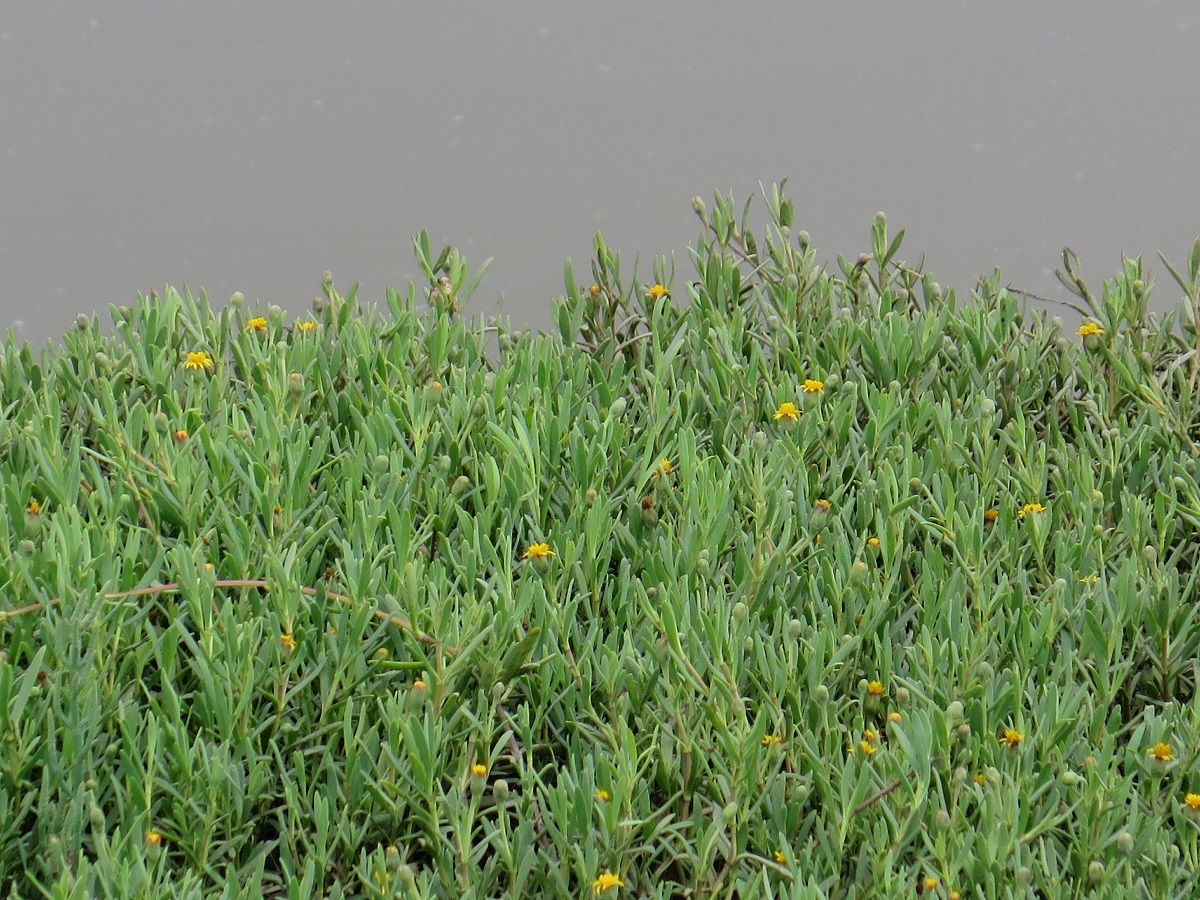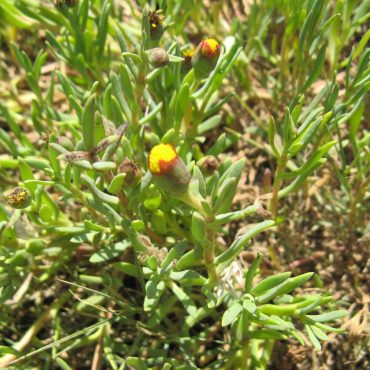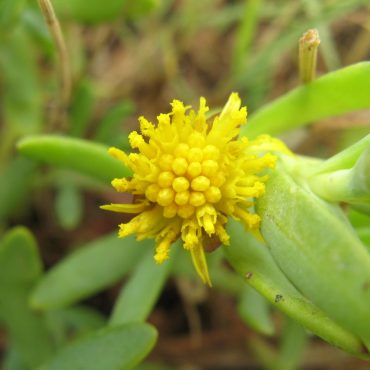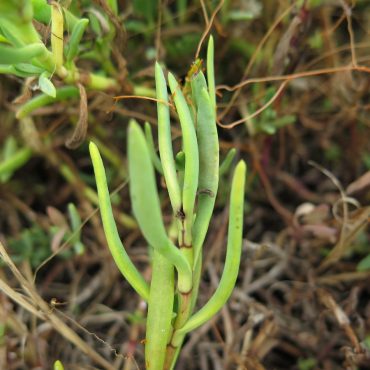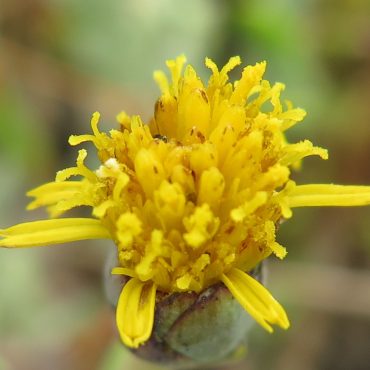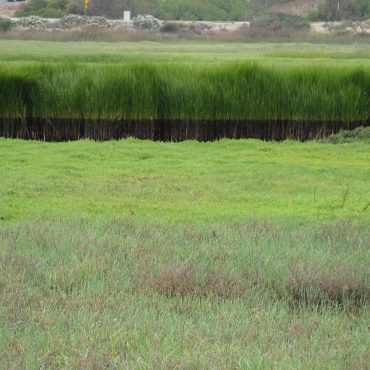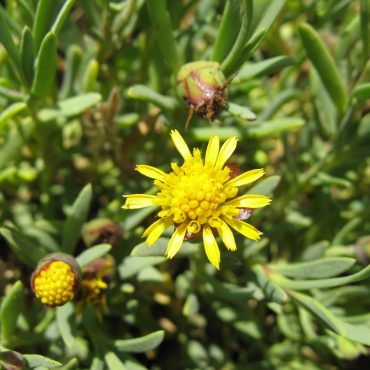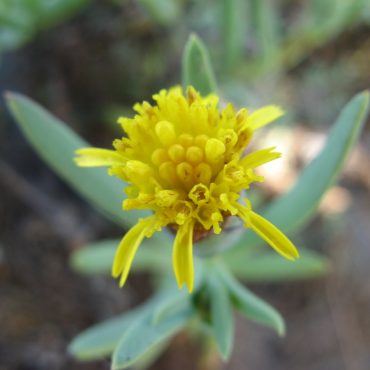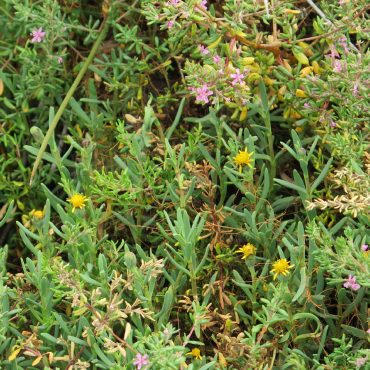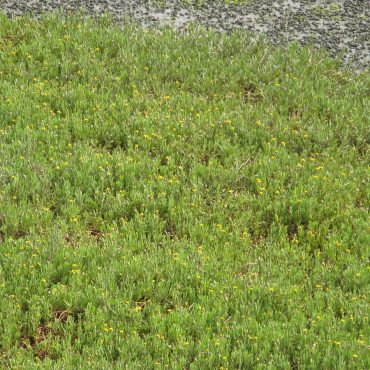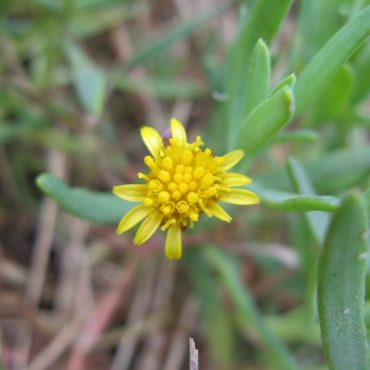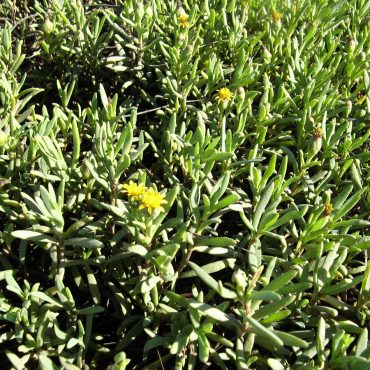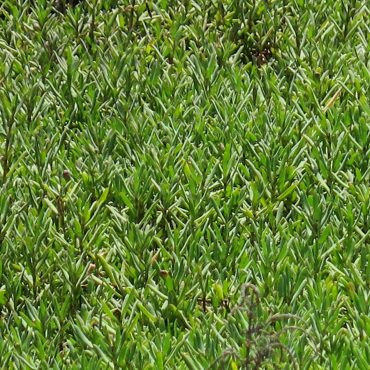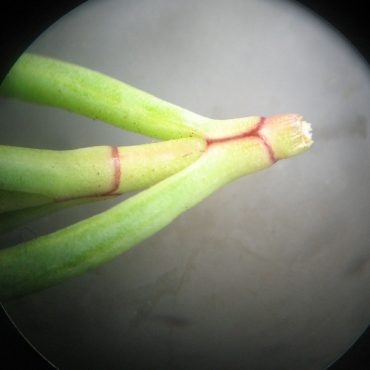Description
2,4,11,59
Salty Susan is a low-growing, perennial herb that spreads horizontally from an underground rhizome; the rhizome sends up vertical shoots usually less than 14 inches (35 cm) high. Smooth fleshy leaves are opposite on the stem and are narrowly linear or oblanceolate in shape and up to 2½ inches (6 cm) long, with smooth margins. Leaves are bright green in color and lack petioles, clasping the stem directly and fusing with the base of the opposite leaf. Leaves are shed in pairs leaving a persistent, tan membrane around the stem. From a distance, salty Susan can be mistaken for pickleweed, from which it is distinguished by a brighter green color, the presence of leaves and, when blooming, the presence of flowers.
Bright yellow, daisy-like flower heads, about 3/4 inch (2 cm) across, are solitary on the ends of branches. Flower heads consist of both disk and ray florets on a domed receptacle, which makes the disk florets more prominent than the ray florets. The involucre consists of 2-15 overlapping, closely appressed phyllaries. The outer phyllaries are broadly triangular to ovate; their tips often tinged with maroon. There are up to 12 strap-shaped, female ray florets, the ray often toothed at the end. There are up to 50 symmetrical bisexual five-lobed disk florets. The pistil of both the ray and the disk floret has an inferior ovary and an unequally branched style exserted from the floret. The disk floret has five stamens, the anthers of which are loosely fused around the style. Most blooms occur April to December.1
The small, dark, dry one-seeded fruit is less than 1/8 inch (3 mm) long with 10 ribs. Fruit from ray florets are somewhat smaller than disk fruit. The pappus is absent or rudimentary.

